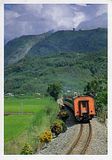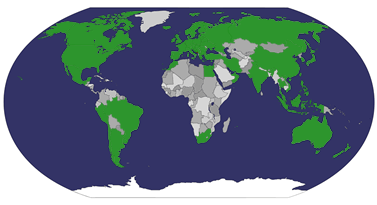
Kids in traditional costumes, Pisaq, Cusco, Peru (UNESCO WHS)



Písac is a Peruvian village in the Sacred Valley on the Urubamba River. The village is well-known for its market every Sunday, Tuesday, and Thursday, an event which attracts heavy tourist traffic from nearby Cusco. One of its more notable features is a large pisonay tree which dominates the central plaza. The sanctuary of Huanca, home to a sacred shrine, is also near the village. Pilgrims travel to the shrine every September.
The area is perhaps best known for its Incan ruins, known as Inca Písac, which lie atop a hill at the entrance to the valley. The ruins are separated along the ridge into four groups: Pisaqa, Intihuatana, Q'allaqasa, and Kinchiracay. Intihuatana includes a number of bathes and temples. The Temple of the Sun, a volcanic outcrop carved into a "hitching post" for the Sun (or Inti), is the focus, and the angles of its base suggest that it served some astronomical function. Q'allaqasa, which is built onto a natural spur and overlooks the valley, is known as the citadel.
The hillside is lined with agricultural terraces constructed by the Inca and still in use today. These terraces were created by hauling richer topsoil from the lower lands by hand. They enabled them to produce surplus food more than would normally be possible at altitudes as high as 11,000 feet. With military, religious, and agricultural structures, the site served at least a triple purpose. Besides a country estate, it is thought that Písac defended the southern entrance to the Sacred Valley, while Choquequirao defended the western entrance and the fortress at Ollantaytambo the northern. Inca Pisac controlled a route which connected the Inca Empire with the border of the rain forest. According to Kim MacQuarrie, Pachacuti erected a number of royal estates after he conquered other ethnic groups to remember the victories. Among these royal estates are Pisac (victory over the Cuyos), Ollantaytambo (victory over the Tambos) and Machu Picchu (conquest of the Vilcabamba Valley) . Other historians suggest that Pisac was established in order to protect Cusco from possible attacks of the Antis nations. It is unknown when Inca Pisac was built. Since it does not appear to have been inhabited by any pre-Inca civilization, it was most likely built no earlier than 1440. It was distroyed by Pizarro and the Conquistadores in the early 1530s. The modern town of Pisac was built by Viceroy Toledo down in the valley during the 1570s.
The narrow rows of terraces beneath the citadel are thought to represent the wing of a partridge (pisaca), from which the village and ruins get their name. The birds are also common in the area at dusk.
庫斯科(西班牙文:Cusco;蓋丘亞語:Qosqo)是秘魯東南方的城市,人口約有30萬人,座落在Huatanay谷中(Huatanay有神聖的意思),被安地斯山脈環繞,是古老的印加帝國的搖籃。
庫斯科是一個高海拔城市,海拔有3400公尺(11024英尺),它的名字在秘魯當地話中(蓋丘亞語)意味著「肚臍」,是過去印加帝國文明的商業、農業與宗教中心。在11到12世紀時,第一位印加國王曼科·卡派克建立的。今日在庫斯科,印加宮殿的花崗岩牆壁仍然存在,紀念碑和太陽寺廟也都還保留著。
References sources : wikipedia


























 Postcards received from
Postcards received from 








































































0 comments:
Post a Comment